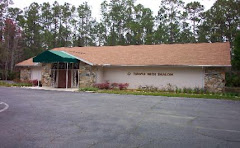





Celebrating Channukah at Beth Shalom
Chanukah comes from the Jewish word chinuch, meaning education. The story of Chanukah is the story of the struggle for Jewish chinuch versus Greek education. The outcome was victory for the Jews against a foreign enemy and a foreign education.
We might think that since we won, we have continued with our educational successes. But unfortunately today we see many examples of educational failures throughout the Jewish community. As children reach their late teens, they sometimes opt to leave their parents' heritage and instead abandon themselves to the prevalent pop culture of the streets. Many fall into drugs, ruining their lives and grieving their parents.
Much of this could have been avoided if the parents had given their children correct roadmaps for mapping out their lives. Temple Beth Shalom and its substantial investment in its Religious School works to create and make accessible those roadmaps that help children and their parents find their way.
A road map is something we are all familiar with. Before starting out on a long journey into an area that we are unfamiliar with, we get a map. As we drive we compare the real roads that we are on to the lines on the road map.
Generally road maps are correct and by following the various lines on the map we safely arrive at our destination. However it does happen that even though we are following the map, we still get lost. The information on the map is not correct because it does not correctly reflect the reality of the land. Either new roads have been built or old ones have been moved. If we are using a map and we see that it does not help us, but it only confuses us, we will abandon it and find a different way of getting to our destination.
Also a particular road map may be correct for certain modes of transportation, but not for others. The standard roadmap may be fine for a passenger car, but not for a hiker. For a hiker, it may be very dangerous to assume that walking from one place to another will be across flat land. He may in reality jeopardize his hike by walking through dangerous rivers and canyons.
Likewise as roadmap for a passenger car may not be accurate for a helicopter that must go from one location to another. It does not show mountain peaks and airports.
Similarly, when parents try to educate their children, they must realize that the child knows nothing about the reality of life. Children at an early age look to the parents to guide them. If the parent provides proper guidance for the child, then the chances of the child leaving the parents heritage and going into bad and dangerous directions is minimal. But there are several factors that must be taken into consideration.
First, is the direction set forth by the parent for the child proper for that particular child? Children are individuals; even in one family one child may have a personality that will lead him in a direction different from his siblings. He may have strengths and advantages are quite different from his peers. Has the parent taken this into consideration before setting out the roadmap for the child?
The parent must relate to the child as an individual and not as someone that must be molded to a group. Groups may be fine for various social and educational opportunities, but the child's individuality should not be subjugated to a group identity that is not in keeping with the child's unique personality.
Secondly, are the goals and direction in which the child is pointed correct for this particular child? Each child is a unique being and requires being guided in a direction that is proper for him. To send a child in a direction that is not fitting for his personality, is asking for the child to rebel.
In addition, a warm and concerned parent who listens to the child and tries to understand the child's problems is a prerequisite for all parents. Parents must have their child's future and needs in their hearts and not those of the various peer groups.
When parents provide a viable roadmap individually tailored for each particular child, they not only will be doing their child a great service, but their child will always love and respect the parents for it. This is the meaning of (Proverbs 22:6) "Educate the youth in accordance to his manner, and even when he grows old he will not abandon it."
Those gains that we made on Chanukah should not be lost, whether we speak of a group or of an individual. Celebrating Chanukah at Temple Beth Shalom is a sacred task arming and empowering families to convey their precious Jewish heritage, generation after generation.


















































